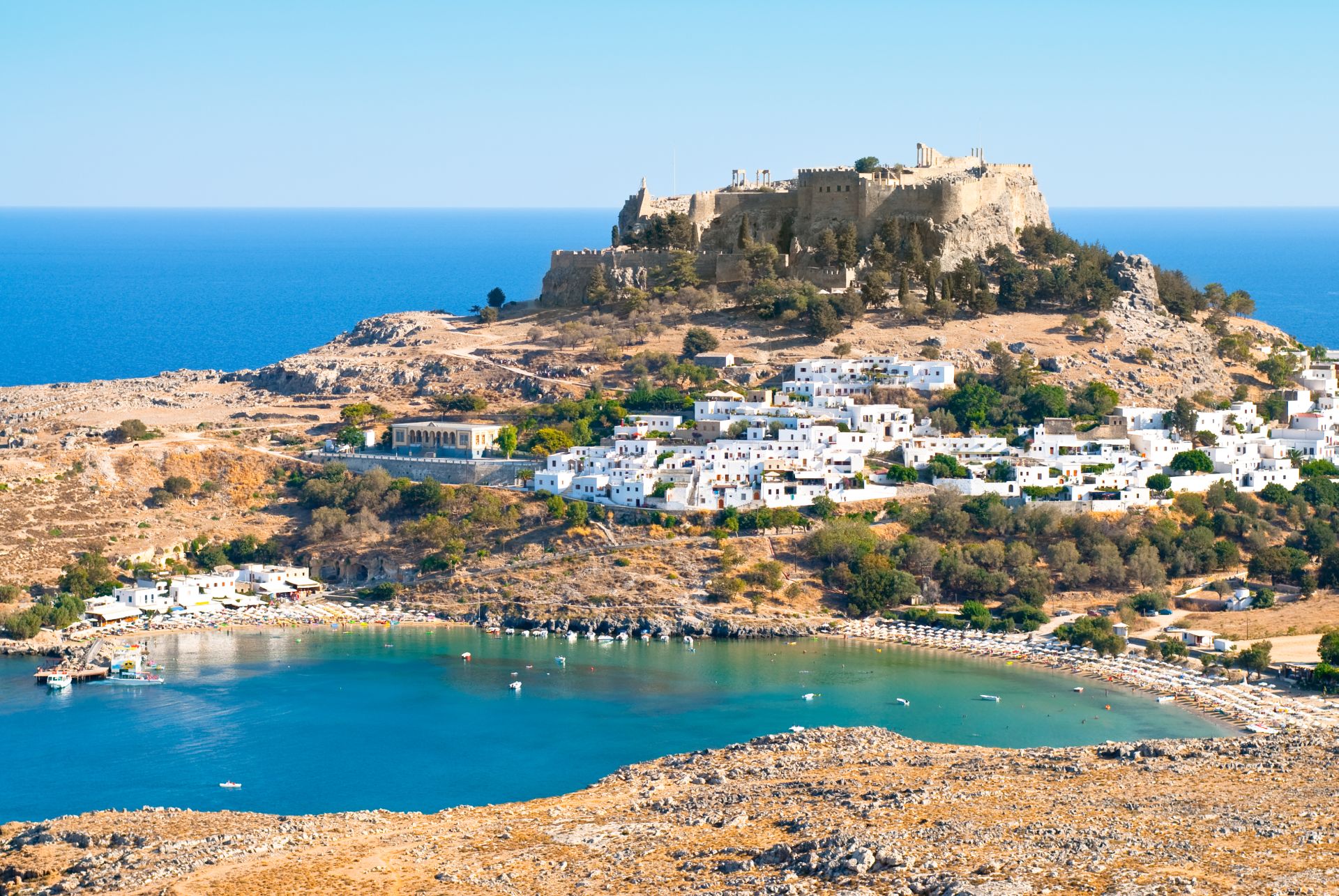Places of Interest

Beneath the modern village of Lindos lies buried one of the most important ancient cities of Rhodes and the eastern Aegean. The only visible today ancient monuments preserves the mighty bare rock that rises from the sea at an altitude of 116 meters and is a landmark of Lindos’ landscape. This is the monumental citadel of the renowned in antiquity sanctuary of Athena Lindia and the medieval castle of the Knights Hospitaller. Lindos’ history, though, starts much earlier, as evidenced by the occasional finds that came to light in the wider area and date from the Neolithic to the Mycenaean periods.
Already from its historical dawn, Lindos rises through the haze of myth as a powerful force. Tlipolemos, son of Hercules, is mentioned as the first settler who brought his Dorians to Rhodes and founded the three major cities of the island, Lindos, Ialyssos and Kamiros, which together with Kos, Cnidus and Halicarnassus formed later a strong confederation, the "Dorian Exapolis". Situated advantageously at the bay of Megalos Yalos, Lindos secured control over the western side of the island. Furthermore, Homer lists Lindos among the Greek cities that took part in the Trojan War, a quite early testimony of its naval power.
The golden age of Lindos was the Archaic period (7th-6th centuries BC), when the city participated in the Greek colonial movement, founding, among others, the city of Gela in Sicily. Dominant figure of the 6th century was the tyrant Kleoboulos, one of the seven sages of the ancient Greek world. In his years were erected the first monumental buildings of the acropolis, such as the temple of Athena.
In 408/7 BC Lindos, Ialyssos and Kamiros co-founded in the northernmost part of the island the greatest city-state of the time, namely the city of Rhodes. Although it ceased to be politically and economically independent, Lindos remained an important center, thanks to its famous sanctuary, which acquired a monumental form with propylaea and staircases in the Hellenistic period. During the Middle Ages the ancient citadel was used as a fortress and its defensive character was reinforced, especially in the years of the Knights’ reign (1309-1522).





 Home
Home










